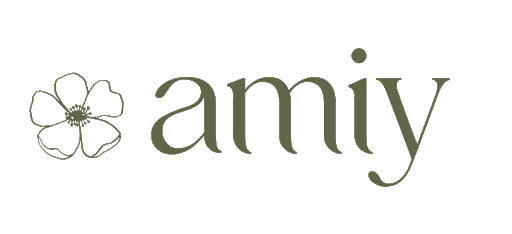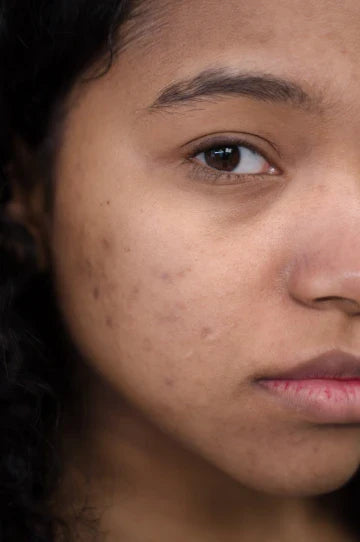




What are you looking for?

Ayurvedic medicine for pimples that targets root causes and dark spots. Learn safe herbs, diet tips, and routines to reduce acne and support clear, even skin.
Pimples don’t just sit on skin. They affect mood, confidence, even sleep. Ayurvedic medicine for pimples looks beyond the surface. It aims to balance the body, calm inflammation, and prevent new breakouts. In this simple guide, you’ll learn how classic herbs, smart food choices, and easy routines can help reduce pimples and the dark marks they leave behind.
Ayurveda links acne to imbalances in Pitta (heat/inflammation) and Kapha (oil/thickness). When extra oil, dead skin, and bacteria clog pores, you get red, painful bumps. Later, the spot may heal but leave post-acne dark spots (hyperpigmentation). Triggers include spicy/oily foods, stress, poor sleep, heavy cosmetics, and not cleansing sweat and pollution after travel or workouts.
There’s no one “magic” pill. Ayurveda combines herbs + daily habits. Common, time-tested herbs include:

You’ll often find these together in balanced blends like Acne SOS.
Post-acne marks (often called PIH—post-inflammatory hyperpigmentation) fade slowly. Support both sides: prevent new pimples and lighten marks gently.

Yes. Pigmentation has many triggers—sun exposure, heat, friction, hormones. If your goal is even skin tone, look for herbs often used in Ayurveda: manjistha, licorice, turmeric, amla. Combine with sun protection, gentle cleansing, and a cooling, Pitta-balancing diet (think warm but not spicy, plenty of seasonal fruits/veg).
Skin mirrors digestion and nerves. When digestion is weak, “ama” (toxin load) rises; when stress spikes, oil and inflammation rise too. Two practical levers:
Breakouts around the jawline before periods are common. Support includes: regular meals, iron-rich foods, gentle exercise, and Shatavari-based support where appropriate. A cycle-comfort blend such as Period Pacifier may help with mood, cramps and better routine—indirectly helping skin.
Amiy blends follow two ideas: Bio-Neuromodulation™ (helping nerves communicate calmly, so skin stress reduces) and Complex Plant Elixir™ (synergistic herbs that work better together). For acne-prone skin, Acne SOS pairs pore support with calming actives. Add gut and sleep support if needed for a whole-system approach.
Look for a balanced blend with neem, turmeric, manjistha and licorice. Use it daily for 8–12 weeks, plus sunscreen and gentle cleansing. Add aloe gel on active spots.
Most people notice early change in 4–6 weeks, then steady lightening over 2–3 months with routine use and sun protection. Heat and sun can slow progress.
Often yes, with guidance. Keep your doctor informed, especially if you’re on antibiotics, retinoids, or isotretinoin. Choose gentle, non-irritating herbal top-ups.
Very spicy, deep-fried foods, excess sugar, and irregular meals may worsen oil and heat. Warm, simple meals and good hydration are safer for acne-prone skin.
Manjistha + licorice + turmeric is a helpful base. Pair with daily sunscreen, light moisturiser, and a cooling, Pitta-friendly diet to protect results.
Track your cycle, keep meals steady, sleep well, and consider cycle support like Period Pacifier . Many find fewer pre-period flares with routine care.
If you want a ready, gentle start, explore Acne SOS. It combines time-tested Ayurvedic herbs that support pore clarity, calm redness, and help marks fade slowly and steadily.
If stress, sleep, digestion, or cycles also affect your skin, consider adding Tranquil Tonic , Gut Reset , or Period Pacifier for whole-system support.
You can also search for: Ayurvedic Medicine For Acidity And Gas | Ayurvedic Medicine For Acidity Safe Gas Relief | Ayurvedic Medicine For Allergy Relief Simple Steps | Ayurvedic Medicine For Anxiety And Stress Calm The Mind Sleep Better | Ayurvedic Medicine For Cholesterol Natural Control Guide | Ayurvedic Medicine For Constipation | Ayurvedic Medicine For Constipation Simple Relief | Ayurvedic Medicine For Dry Cough Natural Relief By Amiy Naturals | Ayurvedic Medicine For Headache Gentle Lasting Relief | Ayurvedic Medicine For Hormonal Imbalance Women S Guide | Ayurvedic Medicine For Hormonal Imbalance Women S Guide 1 | Ayurvedic Medicine For Inflammation And Pain Natural Relief | Ayurvedic Medicine For Irregular Periods Gentle Relief Balance | Ayurvedic Medicine For Joint Muscle Pain Simple Relief | Ayurvedic Medicine For Knee Pain Natural Relief Guide | Ayurvedic Medicine For Nerve Pain Natural Relief Guide | Ayurvedic Medicine For Sleep Gentle Ways To Rest | Ayurvedic Medicine For Stomach Pain Gentle Relief | Ayurvedic Medicine For Weight Gain Safe Natural Ways | Ayurvedic Medicine Joint Muscle Pain | Ayurvedic Medicine Simple Guide To Natural Healing | Ayurvedic Solution For Stress Anxiety Amiy Naturals | Ayurvedic Syrup For Irregular Periods Gentle Cycle Support | Best Ayurvedic Health Supplements Amiy Naturals Online | Best Ayurvedic Medicine For Acidity And Gas | Best Ayurvedic Medicine For Blood Circulation Amiy Muscle Mercy 1 | Best Ayurvedic Medicine For Body Pain And Weakness Natural Relief | Best Ayurvedic Medicine For Gastric Problem Simple Relief | Best Ayurvedic Medicine For Insomnia Anxiety Amiy Naturals | Best Ayurvedic Medicine For Insomnia Anxiety Amiy Naturals 1 | Best Ayurvedic Medicine For Insomnia Sleep Drops By Amiy | Best Ayurvedic Medicine For Memory And Concentration | Best Ayurvedic Medicine For Migraine Gentle Relief | Best Ayurvedic Medicine For Neurological | Best Ayurvedic Medicine For Painful Menstruation Amiy Naturals | Best Ayurvedic Medicine For Sinus Allergy Relief | Best Ayurvedic Medicine For Skin Diseases Amiy Naturals | Best Ayurvedic Medicine For Snoring Problems Natural Relief | Best Ayurvedic Medicine For Stamina Energy | Best Ayurvedic Medicine For Stomach Cleansing Drops | Best Ayurvedic Medicine For Stomach Problems | Best Ayurvedic Medicine For Varicose Veins Relief | Best Ayurvedic Medicine For Women S Health Amiy Naturals Drops | Best Ayurvedic Medicine For Women S Health Amiy Naturals Drops 1 | Best Ayurvedic Oil For Muscle Pain Relief Safe Natural Support | Best Ayurvedic Products For Skin Herbal Medicine Onlin 1 | Best Ayurvedic Skin Care Products Clear Calm Glowing | Best Ayurvedic Skin Care Products Simple Picks For Clear Calm Skin | Best Ayurvedic Syrup For Glowing Clear Skin Amiy Naturals | Best Medicine For Nerve Pain In Neck Ayurvedic Guide | Buy Ashwagandha Ayurveda Drops Stress Relief Energy Boost | Buy Ayurvedic Blood Purifier Natural Herbal Drops For Healthy Blood | Buy Best Ayurvedic Medicine For Memory Concentration Amiy Naturals | Buy Best Ayurvedic Tonic For Glowing Skin Amiy Naturals | Top 10 Ayurvedic Herbs For Daily Use | Weight Loss Ayurvedic Medicine Safe Options For Women